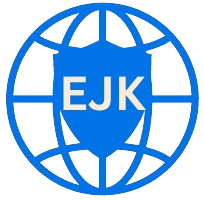
If you’ve decided your business needs a new website, it’s natural to wonder what happens next. What’s involved, how long it will take, and what’s expected of you? And more importantly, how do you make sure the end result is worth the investment?
The website development process is a structured approach to building a tool that works for your business. Whether you’re replacing an old site or starting from scratch, understanding how the process works can make everything smoother and more successful.
Our website development process revolves around Six key steps followed by optional support services which involve on-going continuous improvement to really help your website work for you as best as possible.
Table of Contents
ToggleSix Steps in the website development process
1. Consultation
Every website project begins with a discovery phase. This is where we take the time to understand your business, your customers, and your goals for the site.
Typical questions we cover include:
Who is your target audience?
What actions do you want visitors to take?
What’s not working with your current site?
Are there specific competitors or inspirations?
This stage is about building clarity on what our customers expects from the website, and will shape every technical decision.
2. Planning and Design
Once we’ve agreed on the goals, we start planning the content and structure of your website. It can be as simple as just listing the main pages and general structure of the site (especially if you only require 1-5 pages)
This step includes:
Mapping out the core pages you’ll need (e.g. Home, Services, About, Contact)
Grouping related content under logical headings
Highlighting calls to action and conversion points
Discussing who will provide the content, you or us
- Additional branding/media/design choices such as company colours and logos.
For larger projects this stage can include wireframe design to discuss the layout and flow of the site
3. Development and Build
With your design signed off, development begins. This is where we turn those visuals into a real, working website.
What we do at this stage:
Build a responsive, mobile-first website that works across all devices
Set up your content, imagery, and functionality
Optimise load speed, performance, and accessibility
Implement basic SEO elements (page titles, meta tags, etc.)
We often use WordPress as our CMS of choice, unless your business needs something different. You’ll have access to a private preview link during development so you can check progress.
4. Testing and Adjustments
We test the functionality, performance, and usability.
Our testing checklist includes:
Mobile and tablet compatibility
Contact forms and interactive elements
Page speed checks and browser testing
Link and image checks
General user experience
5. Review
You’ll also be invited to test the site yourself. We encourage clients to click through, fill in forms, and flag anything that doesn’t feel quite right. This step often goes hand in hand with the testing phase and we work together to note anything that you would like changing before launch.
6. Launch
Once you’re happy and sign off the final version, the website can be launched.
This final step includes:
Connecting your domain and hosting
Final SEO checks
Submitting your sitemap to search engines
Real-time monitoring for any early issues.
Post-Launch Support and Maintenance
Just because your website is live doesn’t mean the work stops. This is an often overlooked part of owning a website, it is a misconception that once built that is all that is ever required again, Over time, you’ll likely need updates, new content, security monitoring, or performance tweaks. That’s where ongoing support becomes valuable.
We offer a variety of maintenance options that include:
Plugin and theme updates
Backups and uptime monitoring
SEO reviews
Technical support or edits
You’re never left to figure things out on your own. We offer clear options, whether you want to manage the site yourself or leave it in expert hands, for more information check out our support services page, if you have any questions we will be happy to assist.
Timelines and What Can Affect Them
One of the most common questions we’re asked is, “How long will it take to build the website?” The truth is, there’s no one-size-fits-all answer, timelines vary depending on the size and complexity of your site, how ready your content is, and how quickly feedback is provided during the process.
What we can say is this:
We’ll give you a tailored timeline based on your specific project
Each phase of the process (planning, design, development, testing) has its own milestones
Delays in feedback or content provision are the most common cause of extended timelines
We keep the process efficient by providing clear next steps, reminders, and support throughout. In return, we ask clients to be responsive and available for key approvals or content decisions, it’s the single biggest bottleneck in keeping things on track.
In extreme cases where delays are caused by prolonged periods of inactivity or unresponsive feedback, additional costs may need to be applied for extended timelines or extra resources to get the project back on track.
If you’re ever unsure about what’s needed or when, we’ll always be there to guide you.
Conclusion:
The website development process doesn’t need to be overwhelming. With the right structure, the right team, and clear communication, you’ll end up with a site that reflects your brand, supports your goals, and works well for your customers.
If you’re ready to get started or want to discuss your business needs, book a discovery call! If you have any further questions send us an email via the contact form.
